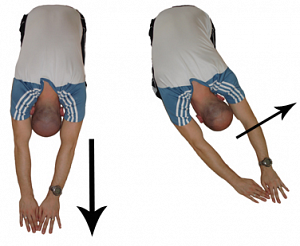5 Gardening Hacks
Hack #1: Citrus Peel Starter Pot
This is certainly one of the most awesome gardening hacks you will ever come across! As you may already know, every gardener should have several starter pots where he can plant his seedlings and watch them grow – not only is the starter pot super useful for helping new plants and flowers get the root system they will so much need later on, but they can also serve as a temporary home for plants during winter, especially for those that are highly sensitive to cold. With that in mind, all you need for this awesome citrus peel starter pot is a large lemon that will be carved out – you basically need to turn the lemon into a small pot for your plants, and then allow the lemon peel to create the perfectly acidic environment for the seedling to thrive.
Hack #2: Reuse Your Eggshells
If you used to spend a lot of time at the countryside as a child, then the chances are that you have already seen your parents or your grandparents do this – they took all the used eggshells, smashed them then combined them with the soil, in the backyard. Have you ever asked yourself why do they do it? The reason is rather simple: eggshells are super rich in calcium, and just as we need lots of calcium to keep our bones and teeth strong, so do plants and flowers. That being said, make sure to carefully store all of your eggshells from now on, in a separate container, then smash them until they turn into powder and your plants will love the new “fuel”!
Hack #3: Make Your Own Weed Killer With Vinegar
Vinegar is known for its very strong odor – and odor that keeps pests at bay and that, apparently, also comes in handy for unwanted weeds! If until now you used to manually remove all the weeds, then you certainly know how difficult and time consuming that task can turn out to be. Why not save yourself some time and effort and make a highly efficient, natural and eco-friendly weed killer based on vinegar? Vinegar has not only therapeutic properties that can heal a variety of conditions and ailments that people suffer from, but it can also heal your plants and flowers and keep them safe and sound, away from weeds that tend to rob them of their moisture, sunlight and, most importantly – nutrients!
Hack #4: Great Tips For Growing Healthy, Big And Delicious-Looking Strawberries
- Water, water, water. Then when you think you have watered too much…water some more. The more water you give them the bigger and sweeter the fruit will be.
- Sprinkle your used coffee grounds at the base of the plants before watering. They love it! They grow so much after that. It’s works great and is better for you than store bought plant food. The coffee grounds also keep away sugar ants and pill bugs.
- Plant a few plants per person. If your planting strawberries because you planned on, ya know, eating them, it’s best to plant a bunch. Don’t worry—you shall have no leftovers. If you do though, you can freeze them whole to use for smoothies in the future.
- Dust the area with a cheap cinnamon to keep ants, cats, pill bugs, and slugs at bay. This came in handy for me because the pill bugs were eating ALL of our strawberries! I buy this one. It lasts a LONG time!
- Don’t get discouraged by the first year of production. The magic is in the second year, my friend!
- Don’t worry about cutting back dead leaves in the winter. They act as insulation keeping the plant alive ’til spring.
- Give them plenty of room to either spread, grow up, or dangle because they will do all three if you let them.
- Some strawberry plants produce all year long and some only produce during the summer. If you want all those strawberries at one time so they can be eaten, processed, frozen, yadda yadda—get the kind isn’t ever-bearing.
- Plant them in a sunny area. You will be glad you did. The sun gives the plants the energy to produce the fruit, so without sunlight, you won’t have strawberries.
- Protect those babies with birds netting. Birds love strawberries as much as we do so make sure you keep them safe or you won’t be harvesting much!
Hack #5: Make Your Own Compost
You can, of course, buy readily available compost for your garden and your backyard, but then again, why spend money on something that is so easy to make on your own? You do not even need to invest too much time and effort into making your own garden compost, all you need to do is to become familiar with the green and brown products that can double as compost and that will keep your plants and flowers properly nourished. For instance, dead and rotting leaves are an excellent source of nutrients, and so are the green and organic products, such as eggshells, unused tomatoes, cucumbers and any other organic products that you can find in your kitchen and that you can no longer consume. Just put them all in the same container and allow them to slowly disintegrate, then mix them with the soil and there you have it, your own free homemade compost that your plants will love!
Flatbread Topped with Mint, Feta, and Lamb

Ingredients
FOR THE FLATBREADS
- 1 3/4 teaspoons dry active yeast (from one 1/4-ounce envelope)
- 2 cups warm water
- 2 tablespoons extra-virgin olive oil, plus more for bowl
- 1 tablespoon sugar
- 1 teaspoon coarse salt
- 4 1/2 cups bread flour, plus more for surface
FOR THE TOPPING
- 1 tablespoon unsalted butter
- 1 tablespoon extra-virgin olive oil, plus more for brushing and drizzling
- 6 leeks, white and pale-green parts only, halved lengthwise, cut crosswise into 1/4-inch-thick slices, and rinsed well
- 16 scallions, thinly sliced
- Coarse salt and freshly ground pepper, to taste
- 1/4 cup chopped fresh flat-leaf parsley
- 1/4 cup chopped fresh mint, plus more for garnish
- 1/2 pound ground lamb
- 1 cup (8 ounces) crumbled feta cheese
Instructions
- Make the flatbreads: Combine yeast and water in a mixer bowl. Let stand until foamy, about 5 minutes. Add oil, sugar, and salt. Mix with the dough hook on medium speed until well combined. Reduce speed to low. With the machine running, add flour, a little at a time, and mix until dough comes together. (You will need more flour in warm weather than in cold.) Transfer dough to a lightly floured work surface, and knead until smooth and supple, 10 to 15 minutes. Transfer to an oiled bowl, and cover with plastic wrap. Refrigerate for at least 4 hours (or overnight).
- Remove dough from refrigerator, and bring to room temperature. Place a pizza stone or baking sheet on the floor of the oven. Preheat oven to 500 degrees.
- Make the topping: Melt butter with oil in a medium skillet over medium heat. Add leeks and scallions; season with salt and pepper. Cook, stirring occasionally, until softened, about 5 minutes. Transfer to a bowl. Stir in parsley and mint.
- Add lamb to the same skillet, and set over medium-high heat. Cook, stirring and breaking meat into small pieces, until browned, 6 to 7 minutes.
- Divide dough into 4 portions. On a lightly floured surface, gently stretch 2 pieces into 14-by-7-inch rounded rectangles; keep other portions covered. Place dough rectangles on a parchment-lined peel or inverted rimmed baking sheet. Brush with oil, and spread each with 1/4 of the leek mixture, leaving a 1/2-inch border. Top each with 1/4 of the lamb, then sprinkle with 1/4 cup feta. Season with salt and pepper. Carefully slide parchment with flatbreads off the peel or sheet onto the pizza stone. Bake until flatbreads are golden brown, 10 to 12 minutes. Repeat with remaining dough.
- Garnish flatbreads with fresh mint, and drizzle with oil. Cut into thick slices, and serve immediately.
Serves: 4
Desk Worker Stretch

Lie on your stomach on the floor or on a mat. Hard version: Lift your legs off the floor. Easy version: Keep the legs on the floor. Bend your elbows and interlock your fingertips behind your neck (thumbs on either side of your neck, pointing towards your upper back). Lift your chin, look ahead. Inhale while lifting your torso as far off the floor as you can, albeit gently, by tightening the muscles along your spine. Lower down on an exhale. Repeat 10 to 15 times.
Now bend your knees and sit back on your heels (tops of the feet still touching the floor). Rest your torso on your thighs and your forehead on the floor or a pillow. Reach your arms out in front of you, walk the fingertips forward and retract the shoulder blades down the back. Keep your butt on your heels as you pick up your forehead and walk your hands over to the left, then to the right to throw in a lat stretch.





